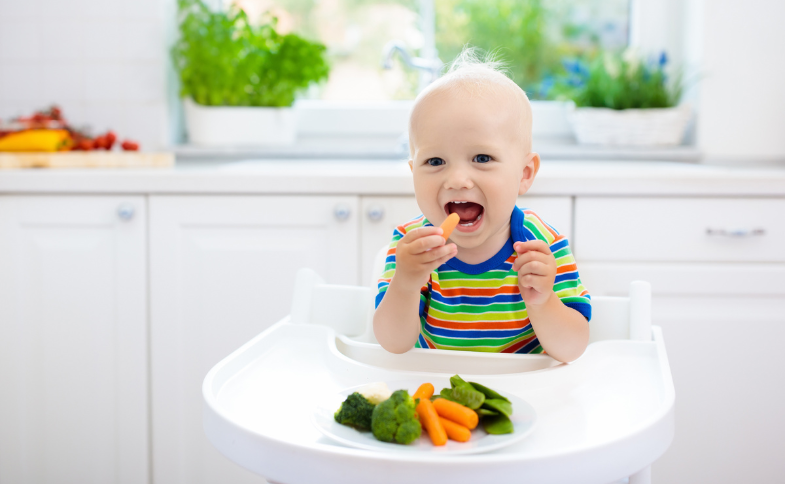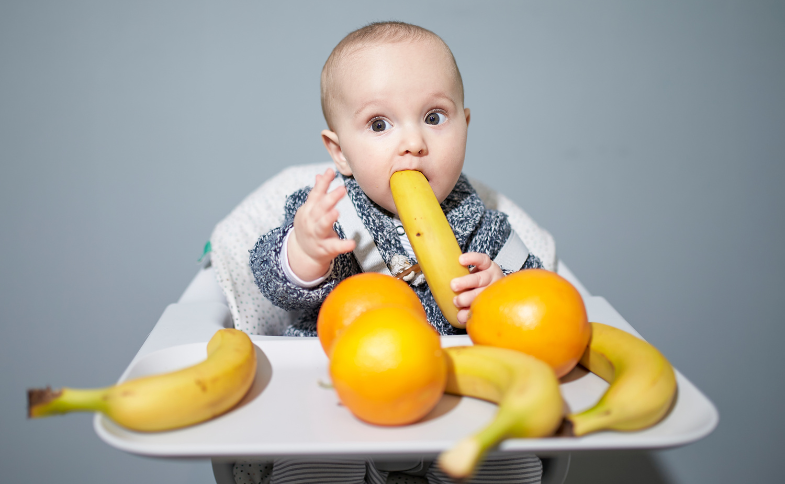How to Introduce Solids to Your Baby
So your baby is finally ready to start eating solids? Congratulations! This is a massive and very exciting milestone. Your little one is finally ready to start experiencing all the flavors, textures, and nutrients that the world around them has to offer. Before you know it, she will be eating like a big kid with the rest of the family!

That said, introducing solids to your kiddo can also be a confusing time. For a lot of parents, it is a period of anxiety as they wonder when, how, and what to feed their baby. If you fall into this category, don't worry. We've got you covered.
Here are some tips and tricks that will help you introduce solids to your baby in no time.
When Should You Start Solids?
Most experts agree that parents should start introducing solids when their little ones are about 6 months old. However, this general recommendation may vary for you depending on your baby's readiness and your doctor's advice. Some parents may opt to introduce solids as early as 4 months.
Therefore, it is smarter to know the signs that your baby is ready to start solids. Here is how:
- Your baby can sit up with minimal or no support and she has good head and neck control.
- Your baby shows interest in food and watches you eat or reaches for your plate or utensils to mimic you.
- Your baby opens her mouth when food is offered or she tries to put food in her mouth by herself.
- She can move food from the front to the back of her mouth and swallow it without gagging or choking.
- She still seems hungry after breastfeeding or formula feeding. She sometimes demands to be fed more frequently or for longer.
If your baby shows these signs before six months, you may want to consult your doctor before starting solids. And if she doesn't show these signs by six months, consider encouraging her by offering her food or letting her play with it.
Step-by-Step Process of How to Start Solids
The best way to start solids is to go slow and follow your baby's cues. There is no right or wrong order or amount of food to give your baby.
The goal is to expose your little one to a wide variety of foods and let them explore and enjoy them at their own pace. Here is the step-by-step process of how to do it:

Choose a time when your baby is alert, happy, and not too hungry or too full. You may want to offer solids after a breastfeeding session or after giving her formula. This way, your baby will not fill up on solids and miss out on her regular meals.
Choose a place where your baby is comfortable and safe. You can use a high chair, a booster seat, or your lap. The most important thing is to make sure your baby is well-supported and upright.
Choose a food that is suitable for your baby's age and stage. You may want to start with single-ingredient purees that are smooth and thin, such as rice cereal, mashed banana, cooked apple, pear, carrot, sweet potato, or pumpkin. You can make your own purees by cooking and blending fresh fruits or vegetables with water or breast milk or formula. You can also use store-bought purees that are labeled as stage 1 or suitable for babies from six months.
Use soft utensils that are gentle for your baby's mouth. Consider getting a small spoon, a soft-tipped one, or a silicone feeder. You can also use your clean finger or let your baby use her own hands if she is interested.
Offer your baby a small amount of food on the spoon or feeder and bring it to their mouth. If she opens her mouth and accepts it, gently place it on her tongue and let her swallow it. If she closes her mouth or turns her head away, don't force it and try again later. If she spits it out or gags on it, don't panic and try again later. It may take several tries before your baby gets used to the new taste and texture of food.
Let your baby set the pace and decide how much she wants to eat. Don't pressure her to finish a certain amount or to eat faster or slower. Follow her cues and stop when she shows signs of being full or done. Some of these signs include closing her mouth, pushing the spoon away, turning her head away, or losing interest in food.
Make it a positive experience for your little one. Heap lots of praise on her and make feeding time fun. Smile, talk, sing, or play with her as you feed her. Avoid distractions such as TV, toys, or other people. And don't scold, bribe, or reward her for eating or not eating.
Increase the variety, quantity, and consistency of food as your baby grows and develops. You may want to introduce one new food at a time and wait for three to five days before introducing another one. This way you can monitor your baby's reaction and identify any allergies or intolerances. Increase the amount of food from one to two teaspoons to one to two tablespoons per meal at the beginning. Also, gradually thicken the purees by adding less water or milk or by mashing them instead of blending them.
Introduce soft finger foods that your baby can pick up and eat on her own. For example, you can offer cooked pasta, cheese, bread, or soft fruits and veggies. Avoid hard, round, or sticky foods that may cause choking such as grapes, cherries, nuts, candy, or marshmallows. Cut the food into small pieces that are easy for your baby to grasp and chew. And most importantly, always supervise your baby closely when she is eating finger foods and never leave her alone with food.
Gradually increase the number and timing of meals as your baby gets older and hungrier. You may want to start with one meal a day and then add a second and a third meal as your baby shows more interest and appetite. You may also want to offer solids before or between her regular feedings instead of after them. By the time your baby is nine to twelve months old, she should be eating three meals a day plus one or two snacks.
Introduce your baby to family foods and meals as she becomes more comfortable and confident with solids. You may want to offer your baby the same food that you are eating or a modified version of it that is suitable for her age and stage. Eat with your baby and let her see you enjoying your food. This way you can encourage her to try new foods and develop healthy eating habits.
Final Thoughts
As you can see, introducing solids to your little one does not have to be difficult. With the tips and tricks outlined here, you should be able to do it with your little angel. Babies should be ready for solids between the ages of 4 to 6 months. Consult your pediatrician before starting, and once you start, do it gradually following the steps outlined here. Before you know it, your little one will have formed healthy eating habits that will serve her well for the rest of her life!